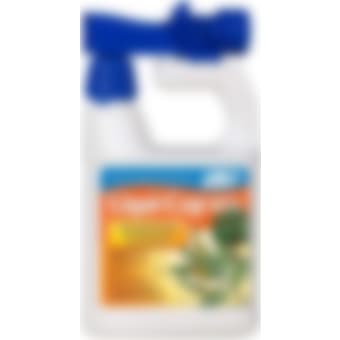Fungicides

Fungicides and Fungal Diseases
Fungal diseases of plants can be a serious issue on farms and golf courses as well as in home gardens and landscapes. We have a large selection of fungicides for use on lawns and turf, ornamental landscapes, and fruits and vegetables. If you are trying to prevent a plant disease or cure one (we recommend prevention) we have the fungicide products you'll need.
Preventing Fungus Problems In Lawns
Preventing fungus in your lawn is a better option than treating a fungus problem. Fungicides as a rule are expensive and won't repair the damage that the fungus has already caused.
Prevention Tips For a Fungus- Free and Healthy Lawn
- Avoid using high nitrogen fertilizers on cool season grasses in late spring and summer. On warm season grasses avoid the high nitrogen fertilizers in fall and spring. Choosing a slow release nitrogen in a fertilizer, may cost a bit more, but they don't promote the rapid burst of growth that fungi love. We carry mostly the controlled released nitrogen fertilizers, with a couple of exceptions.
Various chemical classes of fungicides
Contine Here- Avoid using high nitrogen fertilizers on cool season grasses in the late spring and summer. On warm season grasses avoid the high nitrogen fertilizers in the fall and the spring. Slow release form of nitrogen in the fertilizer may cost a bit more but they don’t promote the rapid burst of growth that fungi love
- Don't over-water your lawn. Many people water their lawn daily and it never gets a chance to dry out. More water but less frequent is the mantra. Whenever possible, water your lawn in the morning. I have a good friend who is a grounds-keeper for a college baseball field and he always says, “Wash the dew off of the grass.
- Don't spread the disease. If you have any signs of fungus, bag your clippings. Don’t forget to rinse off the underside of the lawn mower or you will be slinging fungal spores all over the lawn. Many professionals spray the underside of their mowers with a solution of one part bleach to nine parts water. This will destroy any fungal spores trying to hitch a ride on your mower.
- Keep the lawn at the proper height. 2 or 2½ inches for most grasses and up to 3 inches for St. Augustine grass.
- Sharpen your lawn mower blade. Dull blades tear and rip the grass rather than cut it. The resulting ragged edges are perfect entry points for fungus. If you are not comfortable sharpening the blade yourself, you can have it done for $10 bucks or so.
- Aerate the lawn to prevent soil compaction and promote good drainage.Test the soil.Lawns with a soil PH of less than 6 are more likely to have fungus problems.
- Have the soil tested, and apply lime according to test recommendations. Disease may be more severe if the soil pH is less than 6.0.
Remember that, despite your best efforts, wet conditions and the proper temperatures may cause your lawn to experience a fungus problem. When using fungicides, always be sure to read and follow the directions on the product label.
The labels can be confusing so if you need some help choosing a product or deciphering the information on the label, you can contact us at info@doyourownpestcontrol.com or 800-476-3368.


















